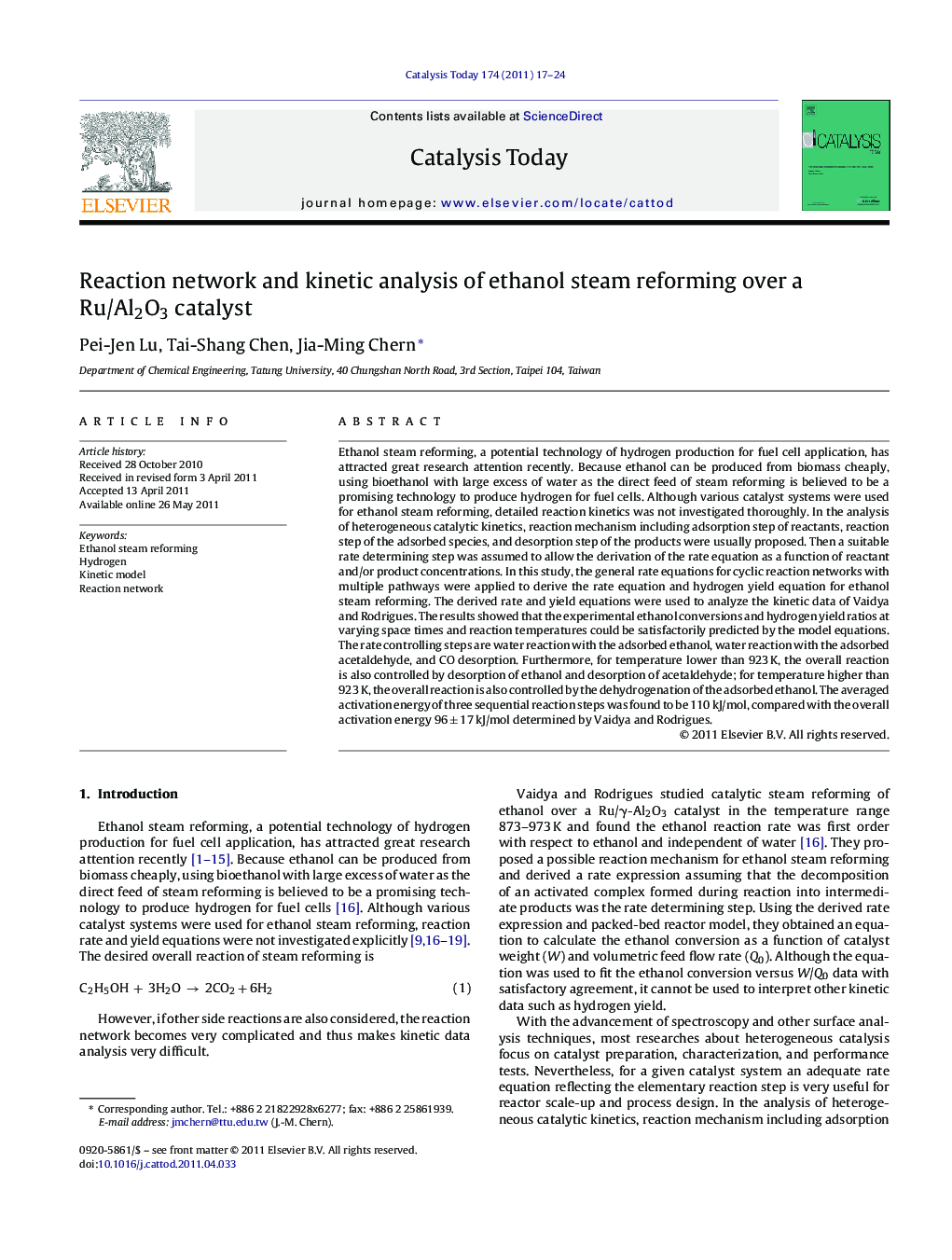| کد مقاله | کد نشریه | سال انتشار | مقاله انگلیسی | نسخه تمام متن |
|---|---|---|---|---|
| 55900 | 47065 | 2011 | 8 صفحه PDF | دانلود رایگان |

Ethanol steam reforming, a potential technology of hydrogen production for fuel cell application, has attracted great research attention recently. Because ethanol can be produced from biomass cheaply, using bioethanol with large excess of water as the direct feed of steam reforming is believed to be a promising technology to produce hydrogen for fuel cells. Although various catalyst systems were used for ethanol steam reforming, detailed reaction kinetics was not investigated thoroughly. In the analysis of heterogeneous catalytic kinetics, reaction mechanism including adsorption step of reactants, reaction step of the adsorbed species, and desorption step of the products were usually proposed. Then a suitable rate determining step was assumed to allow the derivation of the rate equation as a function of reactant and/or product concentrations. In this study, the general rate equations for cyclic reaction networks with multiple pathways were applied to derive the rate equation and hydrogen yield equation for ethanol steam reforming. The derived rate and yield equations were used to analyze the kinetic data of Vaidya and Rodrigues. The results showed that the experimental ethanol conversions and hydrogen yield ratios at varying space times and reaction temperatures could be satisfactorily predicted by the model equations. The rate controlling steps are water reaction with the adsorbed ethanol, water reaction with the adsorbed acetaldehyde, and CO desorption. Furthermore, for temperature lower than 923 K, the overall reaction is also controlled by desorption of ethanol and desorption of acetaldehyde; for temperature higher than 923 K, the overall reaction is also controlled by the dehydrogenation of the adsorbed ethanol. The averaged activation energy of three sequential reaction steps was found to be 110 kJ/mol, compared with the overall activation energy 96 ± 17 kJ/mol determined by Vaidya and Rodrigues.
Figure optionsDownload high-quality image (118 K)Download as PowerPoint slideHighlights
► The rate and yield ratio equations of ethanol steam reforming were derived.
► The experimental conversion and yield data were analyzed and compared with the model.
► The activation energies of ethanol adsorption and dehydrogenation were determined.
► Some important rate controlling steps were identified.
► Possible reaction mechanism shift at 923 K was identified.
Journal: Catalysis Today - Volume 174, Issue 1, 2 October 2011, Pages 17–24